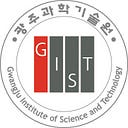Gwangju Institute of Science and Technology Researchers Embrace Uncertainty to Make Microgrids Better
The new two-stage stochastic optimization model accounts for variations and uncertainty in renewable energy to make the optimal scheduling decision
Microgrids are crucial for integrating renewable energy into the electrical grid. But current microgrid models ignore the inherent uncertainty of renewable energy supply. Now, scientists from Gwangju Institute of Science and Technology have developed a new optimization model that incorporates possible variations in future power outputs to arrive upon an optimal scheduling decision and reduce operational costs and load shedding.
Renewable energy is seen as an answer to climate change, yet its uptake is limited by the variability and intermittent nature of most renewable energy sources. A promising solution to this problem is microgrids. Microgrids are smaller, localized electricity grids that can be connected to the main grid of the region, but also can also be disconnected or “islanded” if needed. Models that guide the operation of microgrids, such as scheduling load shedding etc., are key to their efficient functioning. But thus far, most microgrid models have either neglected the uncertainty and variations in renewable energy or assumed the worst-case scenario, which can lead to an increase in energy not supplied (ENS) and operating costs.
To address this, a research team from Gwangju Institute of Science and Technology, South Korea, has developed a new two-stage stochastic optimization model to minimize operating costs and load shedding. According to Dr. Yun-Su Kim, who led the study, “One of the problems with microgrids is that they sometimes cannot supply enough electricity for the load, causing load shedding, and at other times they produce too much electricity. In this paper, we created an operation algorithm that can reduce operation costs and load shedding.” The paper was made available online on August 26th, 2022 and was published in Volume 325 of Applied Energy on November 1st, 2022.
A key element to the new optimization model was the creation of an (ANN)-based prediction model for the power output of renewable energy sources. This power output is obtained in the form of a probability density function, i.e., it provides the likelihood that a given power output will be obtained at any given point of time, thereby accounting for variations and uncertainty in the renewable energy supply. This probability density function is then fed into a stochastic optimization model that makes operating decisions, such as scheduling.
The researchers validated their model using data from a microgrid designed by the Natural Energy Laboratory of Hawaii Authority. They found that the ANN predicted power output with a low error of 9.7%. The stochastic optimization model also offered an approximately 20% reduction in average ENS, as well as around 19% lower operating costs.
“Fossil fuels bring with them climate change and inflation. Reforming the power grid using microgrids can help renewable energy integration. Thus, improving the efficiency and integration of microgrids will bring us one step closer to energy security and stability,” concludes Dr. Kim.
Let us hope this vision is realized soon for a better future!
Reference
Authors: Hamza Abunima (a), Woan-Ho Park (b), Mark B. Glick (c), and Yun-Su Kim (b)
Title of original paper: Two-Stage stochastic optimization for operating a Renewable-Based Microgrid
Journal: Applied Energy
DOI: https://doi.org/10.1016/j.apenergy.2022.119848
Affiliations:
a) Department of Electrical-Electronics Engineering, Üsküdar University, Istanbul, Turkey
b) Graduate School of Energy Convergence, Gwangju Institute of Science and Technology, Gwangju, Republic of Korea
c) Hawaii Natural Energy Institute, Honolulu, HI 96822, USA
*Corresponding author’s email: yunsukim@gist.ac.kr
About the Gwangju Institute of Science and Technology (GIST)
The Gwangju Institute of Science and Technology (GIST) is a research-oriented university situated in Gwangju, South Korea. Founded in 1993, GIST has become one of the most prestigious schools in South Korea. The university aims to create a strong research environment to spur advancements in science and technology and to promote collaboration between international and domestic research programs. With its motto of “A Proud Creator of Future Science and Technology,” GIST has consistently received one of the highest university rankings in Korea.
Website: http://www.gist.ac.kr/
About the author
Yun-Su Kim received his B.S. and Ph.D. degrees in electrical engineering from Seoul National University, Seoul, Korea, in 2010 and 2016, respectively. He worked for Korea Electrotechnology Research Institute (KERI) as a Senior Researcher from 2015 to 2017.
He joined the Faculty of the Gwangju Institute of Science and Technology (GIST) in 2018, where he is currently an Associate Professor in the Graduate School of Energy Convergence. He was a Director of the Korean Society for New and Renewable Energy and the Korean Institute of Electrical Engineers. He is an Associate Editor of IEEE Transactions on Sustainable Energy.
